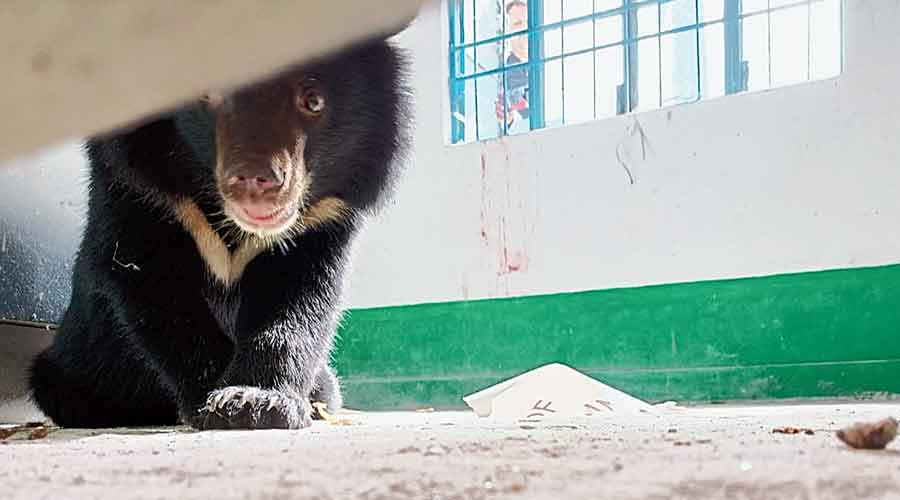The state forest department has decided to put radio collars on Himalayan black bears who descend to the Dooars from the upper reaches of the hills to track their movement and assess the reasons for their coming down.
“We have decided to put radio collars on some of the bears.... The idea is to gather more information about their movement,” said Rajendra Jakhar, chief conservator of forests (wildlife, north Bengal).
He added that said once they put radio collars on bears, it would enable them to know the route taken by the species.
“We can also know about bear habitats and find out whether adequate food is available for the species,” he said.
Frequent sightings of Himalayan black bear, a vulnerable species, in the plains in recent years have made wildlife conservationists raise questions.
“We suspect that bears are facing a shortage of food in their traditional habitats in the upper reaches of the mountains. The state forest department should find out whether food shortage is the reason or something else to make the animals come down to the Dooars,” said Raja Raut, the secretary of the Jalpaiguri Science and Nature Club.
Over the past two-and-ahalf years, a number of bears, which usually stay in reserve forests of the hills such as Neora Valley National Park and Singalila National Park, have been found in a number of tea estates and forest villages in the Dooars, both in Jalpaiguri and Alipurduar districts.
While most bears were trapped by foresters and released into the wild, one bear was beaten to death by residents after it killed a youth in Matiali block of Jalpaiguri.
Sources in the forest department said that in 2021 they first got information that a bear was seen at a tea estate in the western Dooars. Gradually, bear sightings were reported in a number of tea estates of Jalpaiguri in blocks such as Matiali, Nagrakata and Malbazar.
“Similar reports came from Alipurduar. We laid traps to catch bears and release them into the wild,” said a forester.
Foresters said last year they did a survey on bears in Jalpaiguri and Alipurduar and 120 samples, including footprints and scat, were sent to experts. “We are awaiting the report to know the estimated bear population in this region,” said an official.











